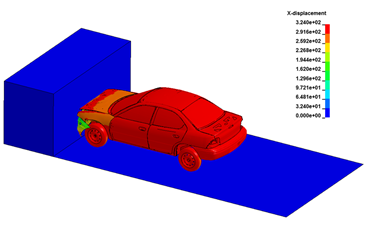There are many severe and fatal crashes that result from vehicles colliding with each other or stationary objects. These collisions cause extremely high impact forces and deformation in the frontal area of the car. The objective of this study is to demonstrate the frontal crash simulation of a vehicle against a rigid wall to examine injury risk and safety potential. Various FE models are used to perform contact-impact nonlinear dynamic analysis of the rigid wall with the vehicle.
In this paper, the ANSYS LSDYNA Explicit solver is used to numerically simulate the crash of the vehicle with a rigid wall. The main objective of this project is to understand vehicle crash behavior under dynamic conditions. The simulation framework is developed and executed in the Opin Kerfi Cloud with Simr ANSYS containers to achieve good accuracy in result prediction, as well as in solution time and resource utilization.






